On March 9, 2024, the Miss World 2023 pageant was held to choose a beauty queen once again. The crown went to Krystyna Pyszková of the Czech Republic. To honor this event, we decided to take a look at the history of the contest and find out how the jury’s approach to assessing women’s beauty has changed over the decades.
1950s: it all started with a scandal.

Kiki Håkansson (Sweden), Miss World 1951
In 1951, as part of the Festival of Britain, the Festival Bikini Contest was held, which journalists later named Miss World. This event became a scandal because in those days a bikini was considered indecent.
Swedish beauty Kikki Håkansson became the winner of this first pageant. And to this day, she remains the only winner to have received her crown while wearing a bikini. Later, the finalists would wear a one-piece swimsuit or evening gown to the awards ceremony.

Denise Perrier (France), Miss World 1953, and Marita Lindahl (Finland), Miss World 1957
Despite the 1951 bikini scandal, the contest founder Eric Morley was pleased with the public attention and decided to hold the pageant annually. His requirements for potential participants were as follows: single women without children aged 17 to 27.
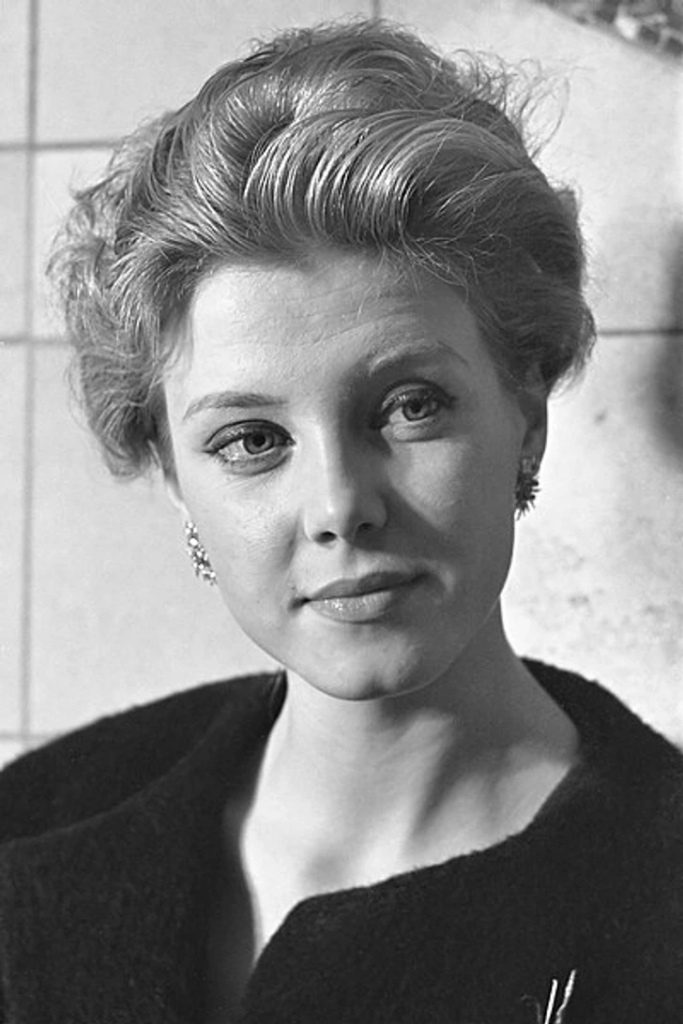
Corine Rottschäfer (Netherlands), Miss World 1959
In 1959, a major British television channel agreed to broadcast the pageant, thus making it even more popular. Corine Rottschäfer found herself in a delicate situation before the awarding ceremony when she discovered that her evening gown had holes in it. Another contestant lent Corine the dress and eventually finished third, while Corine became the winner.
1960s: Miss World is gaining momentum.

Katharina Lodders (Netherlands), Miss World 1962
In the 1960s, the Miss World pageant became one of the most watched television shows. The cash prize for the winner was increased from £500 to £2,500. In 1961, the requirements for contestants were also changed: the upper age limit was now 25 years old.
Katharina Lodders, who was crowned in 1962, addressed these criteria in her own way. On collecting the award, she said out loud, «I don’t think I’m the most beautiful girl in the world — I am the most beautiful girl here.»

Ann Sidney (Great Britain), Miss World 1964
In 1964, the winner was Ann Sidney, who later made a career in the movie industry. By the way, Morley introduced a new rule that same year: he forbade the mothers of contestants to accompany their daughters. The reason why was because the mother of one of the girls caused a lot of inconvenience to the organizers, getting involved in their work.
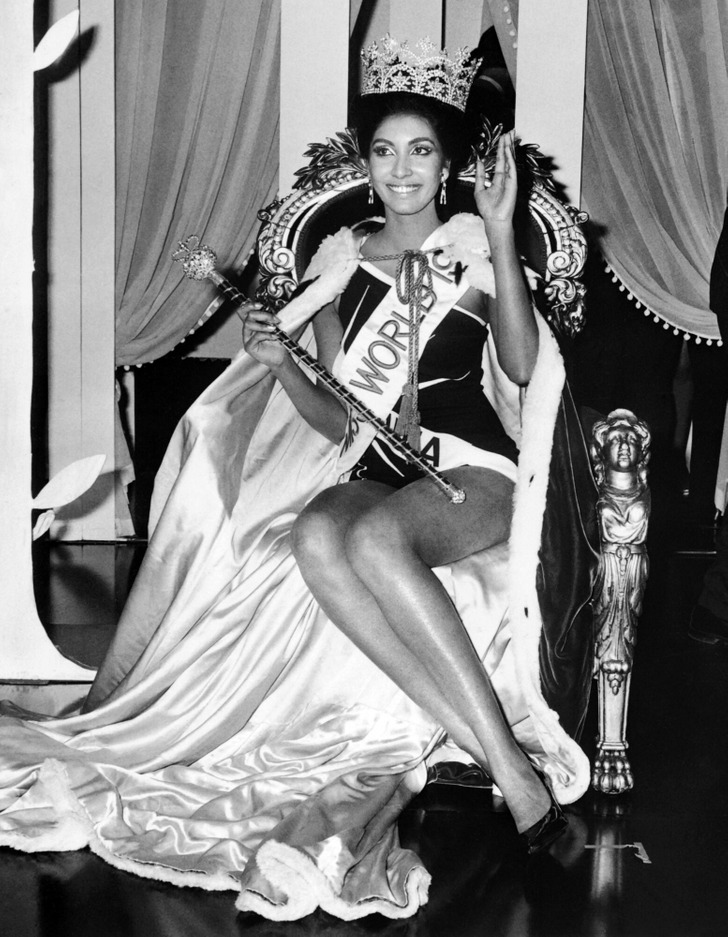
Reita Faria (India), Miss World 1966
In the late 1960s, the contest became even bigger. In 1966, Morley sent invitations to more than 70 countries, 66 of which were happy to respond. And in 1968, for the first time in the history of the event, a married girl was allowed to participate. In the 1970s, however, a strict criterion for the marital status of contestants was reintroduced: single only, period.
1970s: feminists change the essence of the pageant.
Jennifer Hosten (Grenada), Miss World 1970
The beginning of the decade was marked by a new scandal. In 1970, a week before the pageant, British feminists claimed that Miss World objectified women and threatened to interrupt the show. And they did it. When the event was in full swing, some female guests rose from their seats and began to blow whistles, jingle rattles and shout slogans. Later, the movie Misbehaviour starring Keira Knightley was based on these events.
In 1970, Jennifer Hosten won the crown. She became the first black woman to win it.
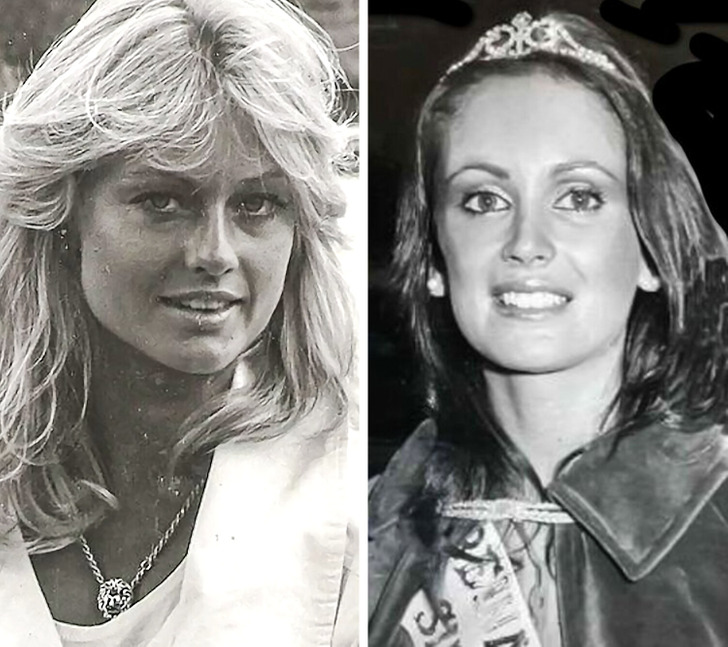
Marie Stävin (Sweden), Miss World 1977, and Silvana Suárez (Argentina), Miss World 1978
The conflict with feminists forced the organizers to think about the message the pageant was sending to the world. And in 1972, Eric Morley and his wife announced that the event would now be held under the slogan «Beauty With a Purpose.» The contestants were also required to present their charity projects to the jury.
1980s: «Beauty With a Purpose»
Mariasela Álvarez (Dominican Republic), Miss World 1982
In the 1980s, the slogan «Beauty With a Purpose» got another meaning: new tests of intelligence and personality were added to the contest program. In the eyes of the judges, the contestants’ personal qualities became as important as their looks.
Giselle Laronde (Trinidad and Tobago), Miss World 1986
In the second half of the decade, the contest became criticized again. The public in different countries didn’t like the fact that girls were judged only by representatives of Western countries. And in 1986, Morley decided to hold the preliminaries of the contest in Macau and give the Eastern judges the opportunity to select the contestants. The winner that year was Giselle Laronde from Trinidad and Tobago. This was the first time a representative of this country won the crown.
Ulla Weigerstorfer (Austria), Miss World 1987
And in 1987, the organizers ignored their own rule that allowed to participate girls aged only 17 to 25 and let a 26-year-old beauty to compete for the crown. Later, the upper age limit would be made 27 again.
1990s: crisis
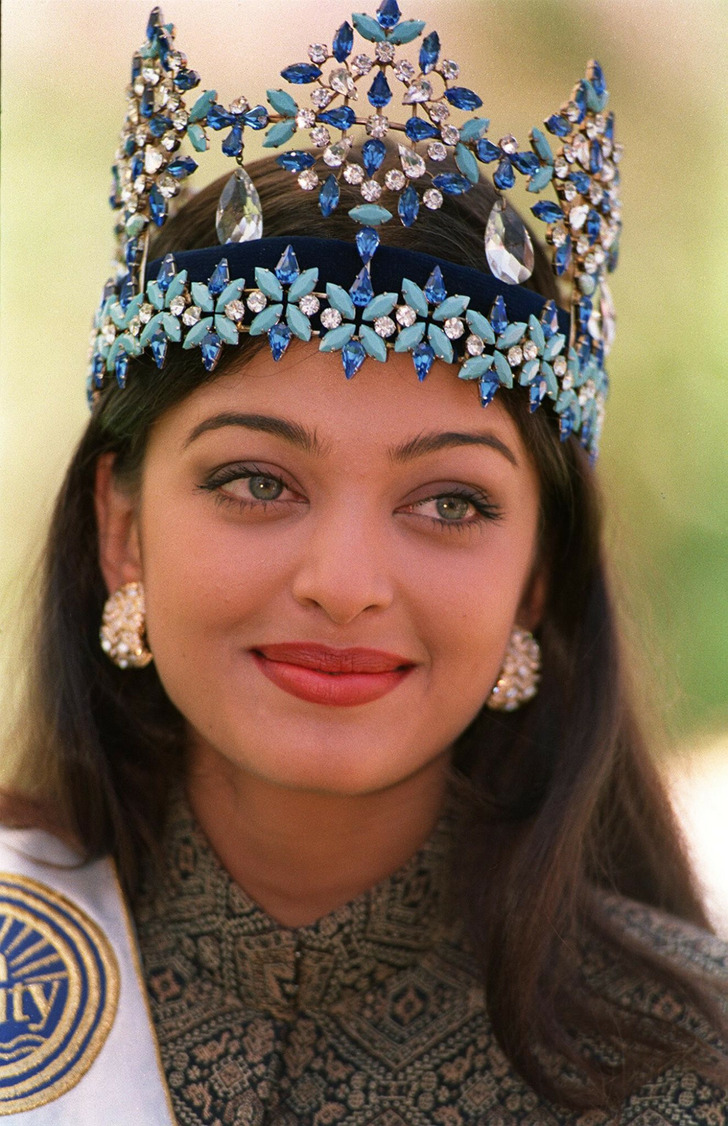
Aishwarya Rai (India), Miss World 1994
In the early 1990s, the popularity of the contest began to decline, and major TV channels stopped broadcasting it. But Morley wasn’t going to give up and managed to find ways to organize the contest at a lower cost.
Yukta Mookhey (India), Miss World 1999
In the second half of the decade, the organizers decided to gather a jury of representatives of different professions from all over the world in order to increase the interest of the audience. So, now beauties were judged by actors and actresses, athletes, magazine editors, and top models from different countries.
2000s: a woman takes the reins.
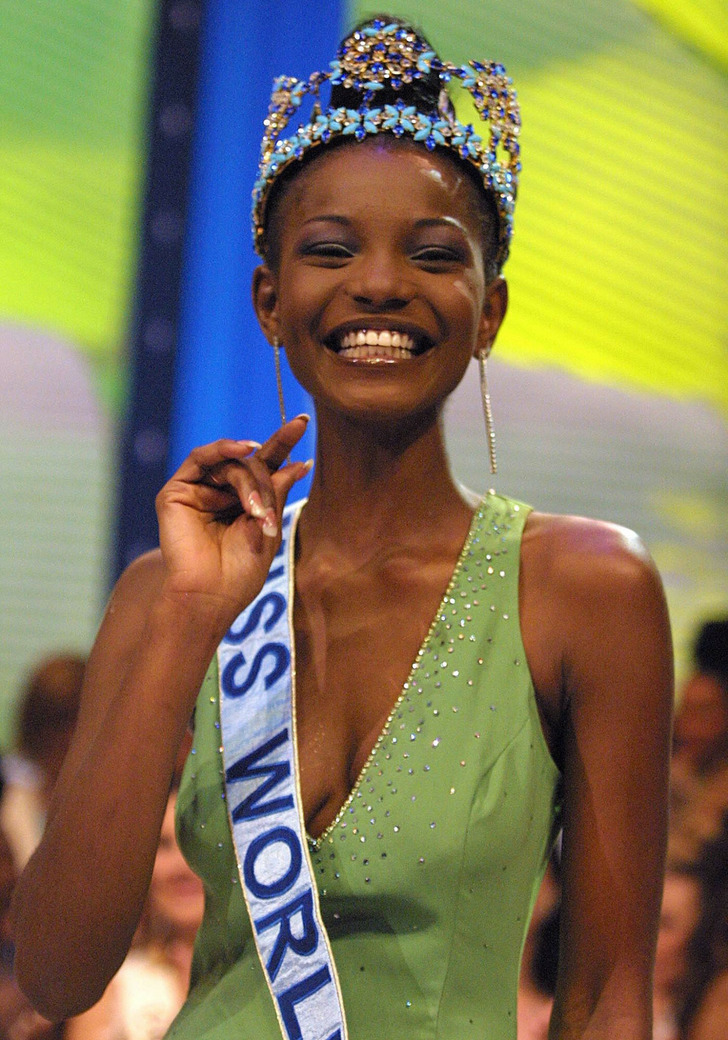
Agbani Darego (Nigeria), Miss World 2001
In 2000, Eric Morley passed away, so his wife Julia took on her husband’s work and decided to make some adjustments. For example, she called the pageant «stupid and horrible» and promised to make it «more positive» for women. She condemned the part of the show where girls had to first parade around in swimsuits and then give interviews about their life ambitions. «Not because I thought there was something wrong, horrible, and unnatural about swimsuits, but I thought you generally don’t feel comfortable if someone is interviewing you in a tux, and you are in a bathing suit,» Julia said.

Rosanna Davison (Ireland), Miss World 2003, and Kaiane Aldorino (Gibraltar), Miss World 2009
In 2004, Julia Morley surpassed her spouse by managing to gather a then record number of participating countries — 107 girls took part in the competition.
2010s: no swimsuits
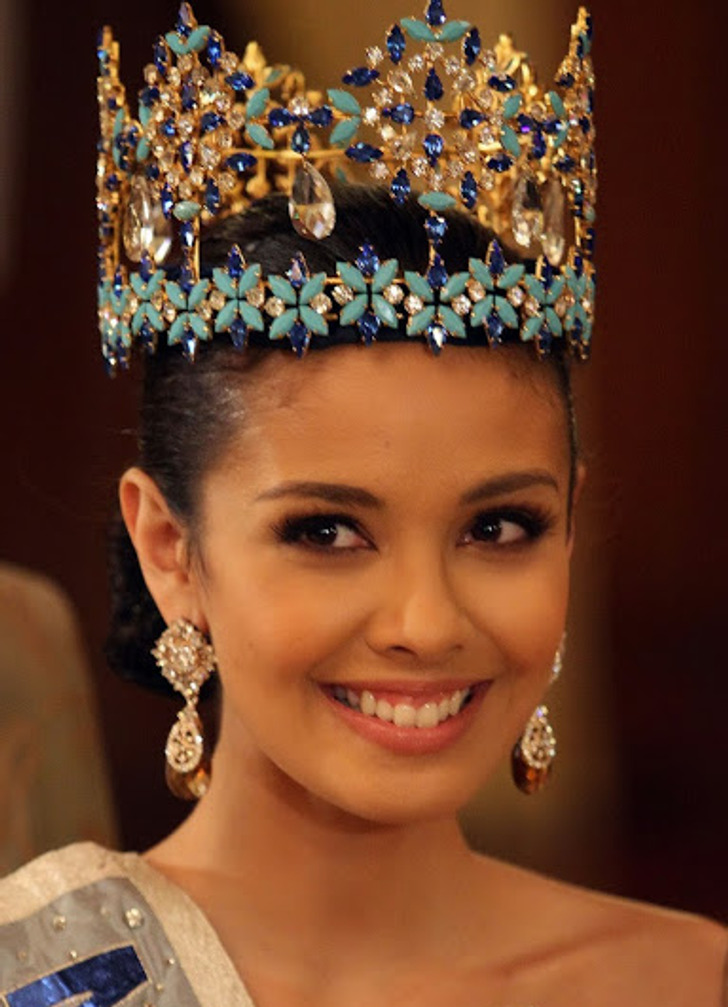
Megan Young (Philippines), Miss World 2013
In 2013, the contestants traveled to Bali. It was the first time the event was held in Southeast Asia. Also, for the first time in the history of the contest, a girl from the Philippines, Megan Young, won the crown.
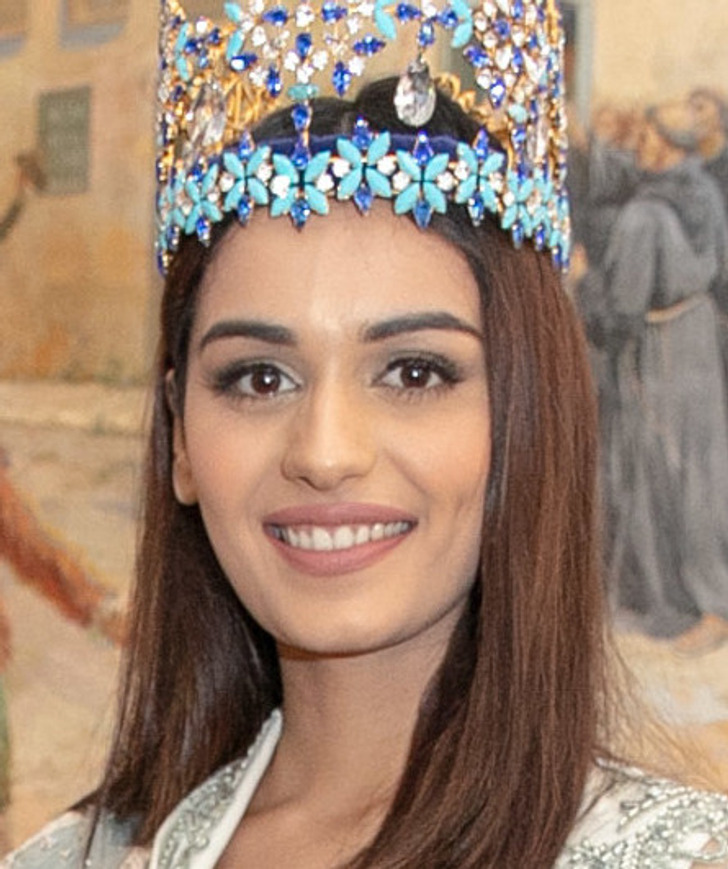
Manushi Chhillar (India), Miss World 2017
Julia Morley, who had previously voiced her discontent with overly revealing costumes of contestants,
decided to remove the swimsuit competition from the pageant in 2015. She said, «We are really not looking at her bottom. We are really listening to her speak.»
2020s: what’s next?

Karolina Bielawska (Poland), Miss World 2021
The first event of the new decade wasn’t really big. In 2022, the number of countries participating in the contest was the smallest since 2003 — only 97. The winner was Karolina Bielawska from Poland. Next time, the Miss World jury gathered in 2024 and crowned Krystyna Pyszková from the Czech Republic.
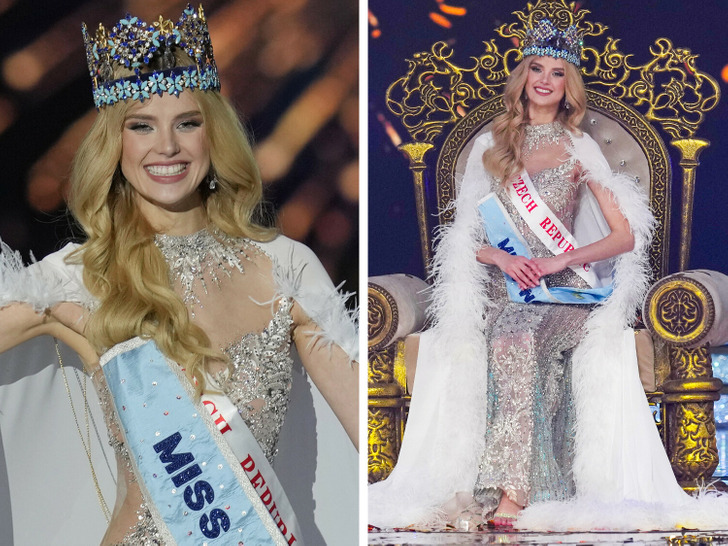
Krystyna Pyszková (Czech Republic), Miss World 2023
Since modern trends criticize various beauty standards, there is a possibility that the Miss World organizers will choose to stop using any selection criteria for future contestants, following the example of Miss Universe. In 2023, the latter removed the upper age limit for contestants. And since Julia Morley suggests that it is personality that should be evaluated, we are sure that changes in the contest are not long to wait.
Speaking about Miss Universe. Here’s what 16 Miss Universe winners look like now.
Preview photo credit Harry Pot / Nationaal Archief / Wikimedia Commons, CC BY-SA 3.0 NL DEED, Historia de la belleza / Wikimedia Commons, EAST NEWS, Rajanish Kakade / Associated Press / East News
Marry the girl who doesn’t know this
In the world of fashion and beauty, there are countless little accessories designed to enhance comfort and confidence. Some are widely known, while others remain a well-kept secret among women. One such discreet yet essential item is the Cuchini pad—a product that many women swear by but few openly talk about. If you’ve never seen one before, you might be wondering, “What exactly is this?”
What Is a Cuchini Pad and Why Do Women Use It?

The Cuchini pad is a small, contoured insert designed to be worn inside tight-fitting clothing, particularly leggings, swimsuits, and other form-fitting attire. Its purpose? To smooth out any visible outlines and prevent what is commonly known as a “camel toe”—the unintentional revealing of intimate contours through clothing.
While many fashion-conscious women appreciate its practicality, the fact that some women don’t even know it exists is what makes this meme so humorous. According to the caption, a girl who has never heard of the Cuchini pad is worth marrying—implying she either wears looser clothing, isn’t overly concerned about such fashion “flaws,” or simply has other priorities in life.
Video : To cover that camel
The Unspoken Reality of Fashion Fixes
The beauty and fashion industries thrive on solutions to problems that many people never considered problems in the first place. Whether it’s double-sided fashion tape, invisible bra straps, or shape-enhancing undergarments, there’s always something available to tweak and refine one’s appearance.
For women who prefer seamless and smooth silhouettes, the Cuchini pad offers a simple fix. It’s often used by models, athletes, and celebrities who frequently wear leggings, swimsuits, or bodysuits in front of the camera.
But not every woman is familiar with such accessories. Some either don’t need them or don’t care, and that’s completely fine! In fact, that’s where the humor of the meme comes in—highlighting the contrast between those who are deeply involved in fashion tricks and those who remain blissfully unaware.
Fashion vs. Natural Confidence: A Lighthearted Take
The phrase “Marry the girl who doesn’t know this” is a humorous nod to the idea that some women live life without worrying about minor fashion “flaws.” It suggests that a woman unbothered by societal beauty pressures might be the ideal partner—someone who is confident, carefree, and perhaps a bit less high-maintenance.

Of course, there’s no right or wrong way to dress, and whether or not a woman knows about the Cuchini pad has absolutely no impact on her value, intelligence, or attractiveness. The joke simply plays on the idea that men might prefer someone who isn’t overly obsessed with fashion details and can embrace natural confidence.
Other Unexpected Fashion Secrets Women Use
If the Cuchini pad is new to you, you might be surprised to learn about other discreet fashion fixes that many women use without ever mentioning them. Here are a few more “secrets” that some women swear by:
1. Fashion Tape (Double-Sided Tape for Clothing)
Ever wonder how celebrities manage to wear plunging necklines without wardrobe malfunctions? The answer: fashion tape. This double-sided adhesive sticks to skin and fabric, ensuring everything stays in place.
2. Silicone Nipple Covers
Instead of wearing a bra, many women opt for silicone nipple covers—small, discreet stickers that prevent any visibility under thin fabrics. They’re especially popular for backless and strapless dresses.
3. Butt-Lifting Shapewear
Many women use seamless shaping shorts or padded underwear to enhance their figure in tight clothing. Some brands offer lift-enhancing designs to give a more sculpted appearance.
4. Foot Cushions for High Heels
High heels can be painful, but many women use gel inserts to make them more comfortable. These tiny cushions reduce pressure on the ball of the foot and prevent slipping inside the shoe.
Video : 6 Secret Style Tips Rich Women Never Share
5. Deodorant as Thigh Chafing Prevention
Wearing a dress on a hot day? Some women swipe clear deodorant on their inner thighs to prevent chafing—a simple hack that works wonders!
Should Fashion Secrets Stay Secret?
While some people love discussing fashion tricks, others prefer to keep these hacks private. The Cuchini pad, in particular, is one of those items that people might use but rarely talk about. It’s a “silent confidence booster”—much like push-up bras or hair extensions.
That’s why this meme is so funny! It humorously implies that if a woman doesn’t even know what a Cuchini pad is, she must be effortlessly confident and unconcerned about such details—qualities that some men find incredibly attractive.
But at the end of the day, whether a woman chooses to use fashion fixes or embrace her natural shape, the most important thing is self-confidence.
The Takeaway: Beauty and Confidence Come in Many Forms

The Cuchini pad is just one of many accessories designed to help women feel more comfortable and confident in their clothing. Some women swear by it, while others have never even heard of it—and that’s okay!
The humor behind the meme is a lighthearted take on how different people approach fashion and beauty. Some individuals meticulously plan every outfit, while others throw on whatever feels good without a second thought.
At the end of the day, the best partner isn’t defined by what they know or don’t know about fashion secrets—but by their personality, kindness, and ability to bring joy into your life.
So whether she knows about the Cuchini pad or not, what really matters is finding someone who makes you happy!



Leave a Reply